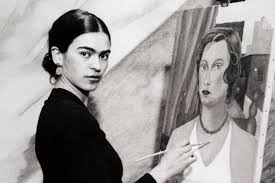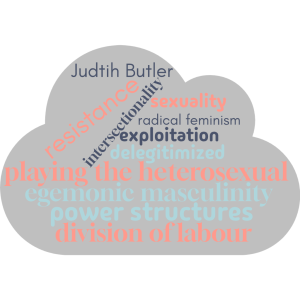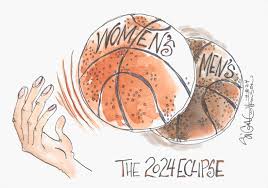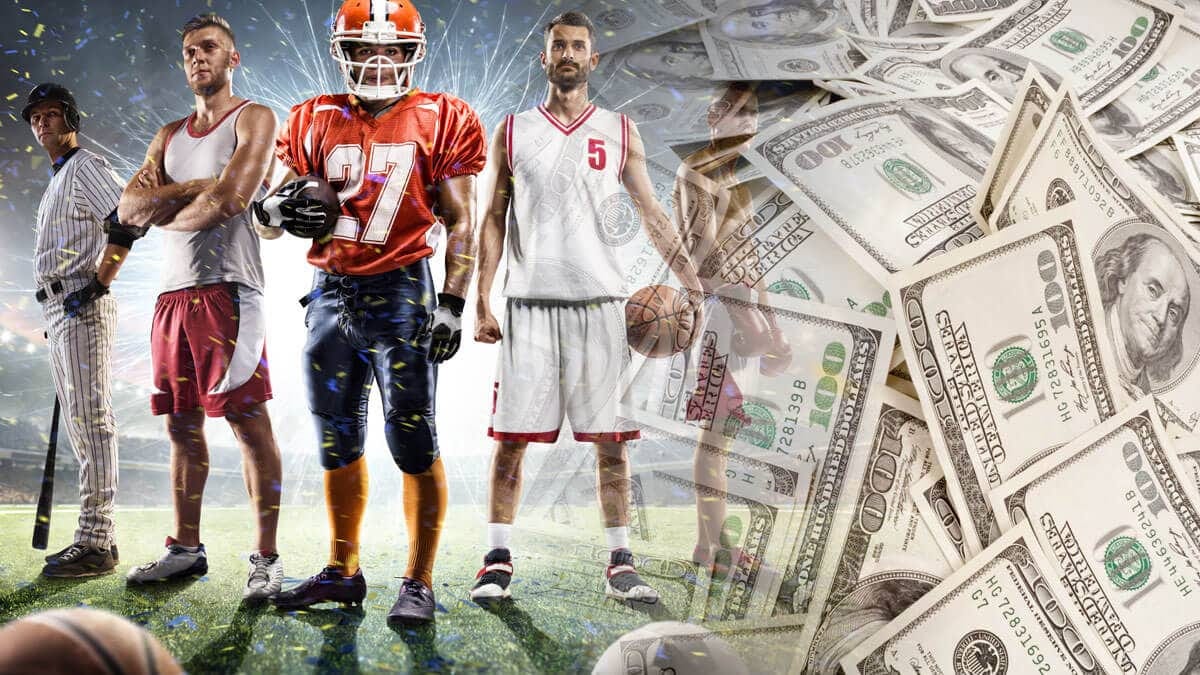1
Section One: The Fundamentals
A) What do we know about sport? What are common assumptions we make about sport and society?

|
I understand what this prompt is trying to get across, that sports provides the opportunity for those who excel in a certain sport to be able to use their talent to their advantage by moving upwards in the world, perhaps to a more reputable sports team or even playing professionally. I do have to say however that these instances of the few exceptionally talented individuals being able to move upwards social due to sport is extremely rare. Sport, often times, highlights social differences by pointing who is financially capable enough to play certains sports. For example, living in Canada where out national sport is hockey proves as a great example of how hockey as a sport highlights social inequalities in how, by nature hockey is an egregiously expensive sport from the equipment to training costs to tournament costs. Hockey as sport in its current existence is elitist as you must be able to fork over small fortune just to be able to play. Even if you are fortunate to be able to play, the class differences become even more apparent by seeing which have the newest and most expensive equipment and which player (or players parents) can afford training camps. While their are some lucky individuals who are able to access social mobility due their own innate talent, more commonly sports (especially winter sports due to equipment) point out social inequalities as one must financially privileged enough to even participate in the sport. |
Exercise 3: Notebook prompt
What are some other metanarratives about sport that you are familiar with? Find an image or video clip or draw something yourself that captures this idea…
So what? Why does any of this matter? Does it matter? As something we grow up with – live with – play through – we don’t often interrogate the meanings of sport, and perhaps we don’t want to.
But being aware of these assumptions and metanarratives is especially important, I would argue, because of the centrality of sport to our everyday lives, the role that sport plays in shaping our childhood and worldviews and….. [finish that thought]
|
But being aware of these assumptions and metanarratives is especially important, I would argue, because of the centrality of sport to our everyday lives, the role that sport plays in shaping our childhood and worldviews and….development to adulthood we must consider long term psychological effects that the overlap of financial privilege and sports create. Thinking about the image above, how many of the “greats” in their respective sports would be considered as such if weren’t for the sheer amount of finding that went into them through training, physio therapy, equipment etc. To say that sports is entirely separate from class would be wrong and we must consider the impacts the intersection of sport and financial privilege leave on kids who wanted a play a certain sport growing up but could do to financial hardship and what that looks like in adulthood.
|
B) What is social justice?
Exercise 4: Padlet Prompt
Think back to the last section and try to look at some of the ideas we discussed differently. How might sport and social justice actually co-exist?
Record any images, video clips, or gifs you added to the padlet and identify a point of intersection between sport and social justice (can be an issue or a barrier or a debate or something you would like to explore in more depth in this course) . Screenshot or paste in your response below.
|
There is much intertwining between advocacy and activism with sport, sometimes by sports teams themselves choosing to speak up on social issues or by outside observers speaking up against sports teams for harmful actions. The chicago blackhawks jersey shows true as a current issue in its mascoting real Indigenous peoples. The fairy-taling of Indigenous peoples and culture as a prevalent issue that pushed a narrative of Indigenous people being something of the past. The chicago blackhawks have expressed zero action or future action to change to logo despite living relatives of Black Hawk (the person the logo and team name is based on) asking for the change of it. April Holder, a relative of Black Hawk said “They can change the name, the logo and they can make retribution to my tribe, to my people” (Savini & Assad, 2024). Holder being a social activist herself, shows how sports and sport teams are not exempt from social critique and that a team like the chicago blackhawks being an NHL team hold a lot of influence within North American society and have the power to change to logo when being asked by a relative to do so. Reference Savini, D. Assad, S. (2024) “Do what’s right”: Black Hawk descendant demands Chicago Blackhawks change logo name. CBS. https://www.cbsnews.com/chicago/news/black-hawk-descendent-demands-chicago-blackhawks-change-logo-name/
|
C) Social Justice Reading
(note: this activity is optional!)
D) KINESIOLOGY AND SOCIAL JUSTICE
Exercise 5:

Exercise 6:
What are the implications of bodies-at-risk discourse and the refusal to understand the health gap from a social justice perspective, according to the authors of this article?
| The implications of bodies-at-risk discourse and the refusal to understand the health-gap can be seen by the disproportionate illness and health obstacles that are faced by marginalized peoples due to lack of research and prioritization of non-white bodies. An example of this can be seen by how Puerto Rican and African American children are more likely to have asthma than white children which then makes them more likely to miss school for health reasons (pg. 234). The lack of haste in researching marginalized bodies and their experience of to being more likely to experience health defects speaks to the idea of white, able-bodied, male bodies being the panical health, therefore being used as the standard of research and when those with bodies who exist outside of this standard experience medical trauma they are blamed for their bodies rather than being provided with proper care. |
Section Two: Sport Feminism
Exercise 7: Notebook Prompt
What is feminism? What does it mean to you? Choose one of the images below and explain how it captures your understanding of feminism (or find one that does speak toyou and paste this into your pressbook with an explanation of why it matters to you.

Feminism an is endlessly subjective study that holds specific experiences and empowerment from person to person. Feminism is intersectional and can be used to critique long established structures and powers that are discriminatory to people with diverse identities. To me feminism is an area of study that I hold a deep relationship with, appreciating the women and peoples who have come before me and come now who study and place words to previously unproctored and abusive systems of power like patriarchy. Of all the images above, the photo of Frida Kahlo speaks to me, her being a women that I hold immense respect for. Kahlo being an Indigenous Mexican women who struggled with chronic pain who protested the treatment of Indigenous peoples, especially Indigenous women in a colonized country as well as her experienced with colonially constructed medical-care in regards to her chronic pain through art. To me this photo represents a women who used feminist ideologies through art to comment on the treatment of marginalized peoples in a colonial country.
|
Exercise 8: Notes Prompt (optional)
NB: Cornell notes is a great resource that teaches effective notetaking. Unfortunately, our system can’t save notes taken in the H5P app, so this is fully optional.
Exercise 9: Crossword Activity

Exercise 10: Padlet Prompt

Going through the text, I decided to use in my word cloud that spoke to me into my relation with sports and my experience with the overlap of feminism and sports and how feminism has been able to applaud behaviour or critique problematic rules and systems. I included the term radical feminism as I feel it would be unfair to create a word cloud relating to feminism without the recognition of the radical actions and ideologies that have allowed for women be able to participate and act in ways that are no longer considered radical. For example, a women choosing to enter and run in a marathon would be seen as a radical act today, however as we have have seen through Katherine Switzer, less then 60 years ago that would have been an extremely radical move to make. Aslo crediting radical feminist like Judith Butler I feel is important to include as they have greatly contributed and continue to contribute to gender and feminist ideology by analyzing topics like gender and admitting their existence as social creations and roles that are played. Also including words like “playing heterosexual”, “sexuality” and “power structures” was important to me to acknowledge the role power structures play in the projection of heterosexuality as a norm, therefore silencing many female athletes from being to express their identities as existing outside of the straight and submissive stereotype associated with women.
|

| I absolutely feel that landscape in sport pertaining to fan interest in changing, with a shift towards women’s sports. In my own experience I have seen a drastic shift in attention to women’s sports just in the past couple years. For example, specific to Canadian audiences, with the creation of the PWHL a huge hockey fandom has been garnered for a women’s hockey league. I remember the year the league started, me and my friends were looking at buying tickets to either the montreal or ottawa games, however all the tickets for both arenas were sold out. To me, this is clear proof of a shifting media attention to women’s leagues.
|


